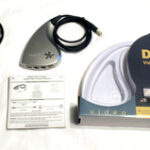The stockings have been hung. The presents are wrapped. And the recorder is fully charged.
Let the Holidays begin.
But before the insanity of the Holidays hits full force, it may be time to brush up on a few video tips.
With the latest video editing software that is available at affordable prices, putting together home movies has never been easier. (I Movie, Movie Maker, Avid, Adobe Premier, or Pinnacle…to name a few)
Whether you are a budding “Steven Spielberg” or just looking to record tomorrow’s memories, the most common mistake of filming is in the recording of the video itself.
Here are five tips for immediately improving home movie quality.
1. Lights, action, camera!
It is no wonder the word “lights” comes first. The proper lighting with any camera shot is imperative for bringing out a subject’s color. It gives depth to the background and makes the subject look alive. Many cameras have a built-in light, and some have one that you can mount on the camera itself. Take the extra time, and whether grandma likes it or not, use the light.
What if a light doesn’t come with the camera? Just get a trouble light out of the garage to supplement when filming indoors. And when indoors, be careful of where your subject is standing. If there is a window behind the subject, and a lot of light coming through, this will automatically darken the image(s) in front of the window… so watch that backlighting! The same can happen outside depending on the direction of the sunlight.
2. Stand when you pan!
Ever get whiplash when watching a home video? If your audience feels motion sickness as you move from grandma cooking, to grandpa sleeping, to uncle Bob watching the football game…it is time to slow down. Nothing can give your movie a more amateurish feel…and sickly feeling…than moving from subject to subject before the audience can focus in.
Here is a simple rule of thumb…no matter how slow you think you are panning…go slower. The editing software will allow you to make smooth transitions from person to person. Panning to film the action is fine…just remember to do it slowly. It might also be handy to use a tripod. This really stabilizes what you are trying to do, and can make panning a whole lot smoother. Not to mention, it can save your arms and back from tiring.
3. What?
Here is another way to screw up really good video…really bad audio. Video cameras have built in microphones…some are better than others. Regardless, remember that if someone is talking, and you want to really record what they are saying, they should be no more than 6 feet directly in front of the camera. Most cameras allow you to plug in an external mic. This can really be handy depending upon the situation you are trying to capture.
4. Get close to the action
Too much of the video we shoot…along with the pictures we take…are from too far away. While there is nothing better at the beginning of a movie than an establishing wide shot, close-ups are imperative. Use the zoom feature to get close, but do not rely on this exclusively. Even though grandma might get mad, and trust me, she will, close-ups allow the viewer to really see people…their faces, emotions, expressions. And don’t just tape someone for a second or two…hold the shot for at least five seconds. Years later, the shots where you can really hear and see family members are invaluable.
5. Lead in/out
Whenever you are filming, make sure to always give yourself some extra footage at the beginning and end of a shot. A general rule of thumb is to start filming 5 seconds before you really think you need to start and continue 5 seconds after you really think you need to end. Give yourself some lead in time and lead out time. The extra footage allows you to not only make sure you capture what you want, but give you some flexibility when you are doing your editing.
I would finally suggest an experiment. Get a camera and film. The first time, try filming without the proper light, panning speed, sound, distance and with no lead-in time. Then, do the opposite. When done, view the video. The difference in quality will surprise you.
It is easy to make these improvements to your filming, which in turn will only help your movies if you decide to edit them later.
And when family members watch what you have done, they will thank you for the time you took to ensure that your families’ memories last a lifetime, and are well worth watching.







